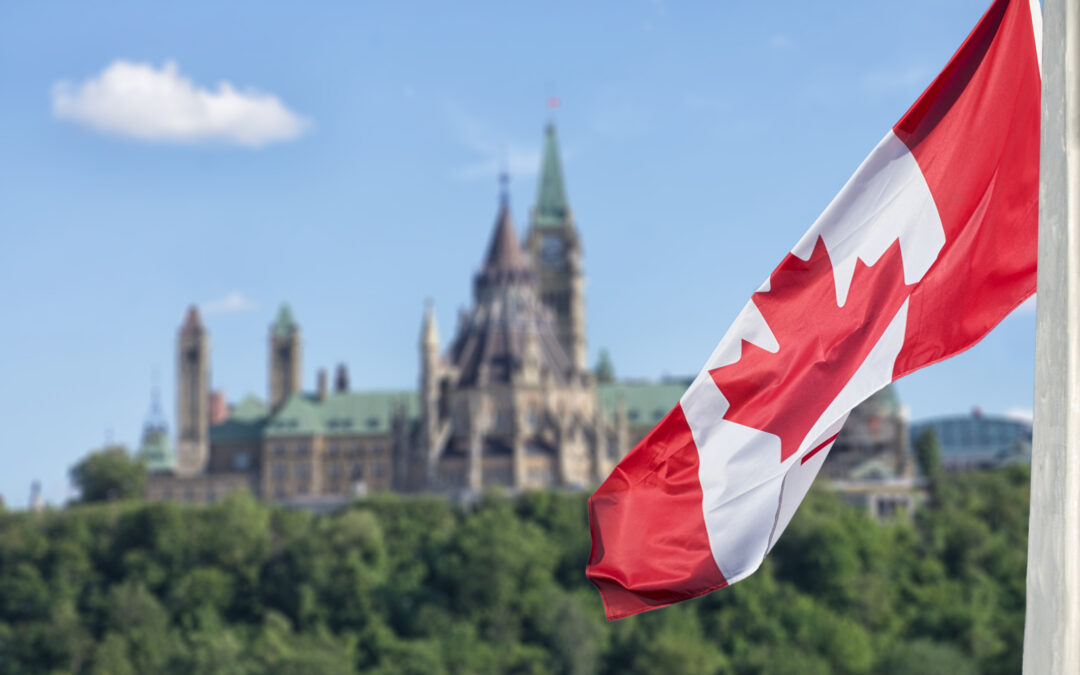Who goes first?
As we enter the final week of the federal election, all federal parties have released their platform as of today. The Conservatives announced their platform this morning, while the NDP and the Liberals released their platforms over the weekend.
With the Liberals leading consistently in the national polls, they received some backlash over the weekend due to $130 billion in new planned spending, well above Justin Trudeau’s fiscal framework, while also promising to find $28 billion in savings over four years. The Liberal plan leans into Carney’s commitment to balance operating spending while investing heavily in capital like defence, housing and economic infrastructure.
The Conservatives delayed their platform release until after advance polls closed. Now that it is has been released, the Conservatives are coming under fire for questionable new revenue projections that seek to reduce their deficit projections relative to extensive tax cuts.
Platform Pitches
Each party’s platform provides a road map of their priorities for Canada should they be elected.
Here are the main themes for each party’s platform and some key policy announcements:
Liberal Party of Canada – Canada Strong
The Liberal plan billed as a response to Trump’s threats to Canadian sovereignty: “America’s unjustified trade war is an attempt to weaken us. We will not let that happen. It’s time to build a future that makes Canada strong. We can give ourselves much more than any foreign government, including the United States, can ever take away. Building one Canadian economy, for example, can expand our economy by up to $200 billion — proof that we are strongest when we are united.”
The Liberal platform’s policies have been grouped into four themes:
- Unite: This plank includes support for the arts, rural transit, Indigenous loan guarantees and CBC/Radio-Canada. When taken together with infrastructure funding earmarked for projects such as high-speed rail and digital, community and health infrastructure, it adds up to $20 billion over four years.
- Secure: $18 billion in new defence spending as well as more than $4 billion in tariff response funding. It also includes about $1.7 billion in additional spending to help the RCMP hire and train 1,000 more personnel, establish a new training academy and boost pay for recruits.
- Protect: Includes health-care initiatives such as helping to create more medical school residency programs, boosting youth mental health, reducing the amount of paperwork doctors have to do and establishing an in-vitro fertilization (IVF) program. When combined, these and other health-care initiatives will cost about $3.5 billion over the next four years.
- Build: The final plank in the Liberal platform includes $22 billion in housing funding. It also includes the $12.5 billion it will cost the federal treasury for scrapping the hike to capital gains and the $12.5 billion to extend the Accelerated Investment Incentive.
Conservative Party of Canada– Change. For an affordable life. Safe streets. For Canada First.
A plan for change after the “lost Liberal decade,” the priorities of affordability, safety and economic independence are at the forefront of the Conservative plan along with substantial cuts to bring Canada back to fiscal discipline. Poilievre’s platform predicts a $31-billion deficit this year, includes a $23.5 billion cut in government program spending for independent consultants, and estimates $20 billion in revenue from counter-tariffs on the United States. His platform is rooted in aggressive deficit reduction, a slew of tax relief measures and economic policy that emphasizes growing Canada’s energy and infrastructure potential. It’s an ambitious platform with major structural shifts in taxation and reduction of regulations to rebuild the economy.
Some key policies that the Conservatives are promising are:
- Ban new or higher federal taxes without first seeking taxpayer approval in a referendum
- Launch a Tax Reform Task Force
- Cut the lowest income tax bracket by 2.25% over four years
- Allow seniors who chose to work to earn up to $34,000 tax free
- Axe the sales tax on all new homes under $1.3 million and incentivize municipalities to slash development charges
- Repeal the entire carbon tax law, including the federal industrial carbon tax backstop, to restore our industrial base and take back control of our economy from the Americans.
New Democratic Party of Canada– Made for People
The NDP released their platform last week with a huge focus on healthcare, affordability, and housing, all of which are bread and butter issues for their base. Billed as a plan “Made for People,” the NDP platform blends their workers’ roots with a fiscal plan built to withstand the trade war. This includes a falling debt to GDP ratio by year four, a contingency reserve to respond to external shocks, revenue coming from corporate profits through taxation and the ending of fossil fuel subsidies. Importantly, the platform focuses on maintaining public services for working people and ensuring the expansion of pharmacare to cover essential medicines by the end of the year.
The NDP are proposing several key policies. These include;
- A cap on grocery essentials, and eliminating the GST from home heating, diapers, and internet services.
- Lowering the hours needed to qualify for EI and extending coverage.
- Introducing national rent control and building 3 million homes by 2030.
- Retrofitting every building in Canada by 2050 and building a clean energy grid.
- Implementing a “Build Canadian, Buy Canadian” plan for workers in union jobs and expanded protections.
- Cracking down on misinformation and hate online, along with oversight of election interference.
Why does this matter to you?
With a record 7.3 million votes cast in advance polls over the Easter weekend – up from 5.8 million advance votes in 2021 – a good chunk of the election result is already in the ballot box.
This means that the Liberal lead in the national polls – with strong regional support in Ontario and Quebec – is likely baked in and would require a major swing in the final week to change the outcome of the election.
On that basis, we are advising our clients to pay close attention to the Liberal platform as a potential governing plan.
The Conservatives, NDP and Bloc Quebecois will hope that their platforms put a spring in their electoral step that is strong enough to hold Carney’s Liberals to a minority, in which case their proposals could be on the table in future negotiations.
As you plan your communications or engagements with the next federal government, it is important to research how your issues rate with each political party to help understand who your champions may be in Parliament. Reach out to Counsel’s multi-partisan team for more insights on each platform and what it means for your advocacy plans.
Ben Parsons
Vice President
bparsons@counselpa.com
Will Shelling
Account Director
wshelling@counselpa.com
Chase Tribble
Senior Consultant
ctribble@counselpa.com




